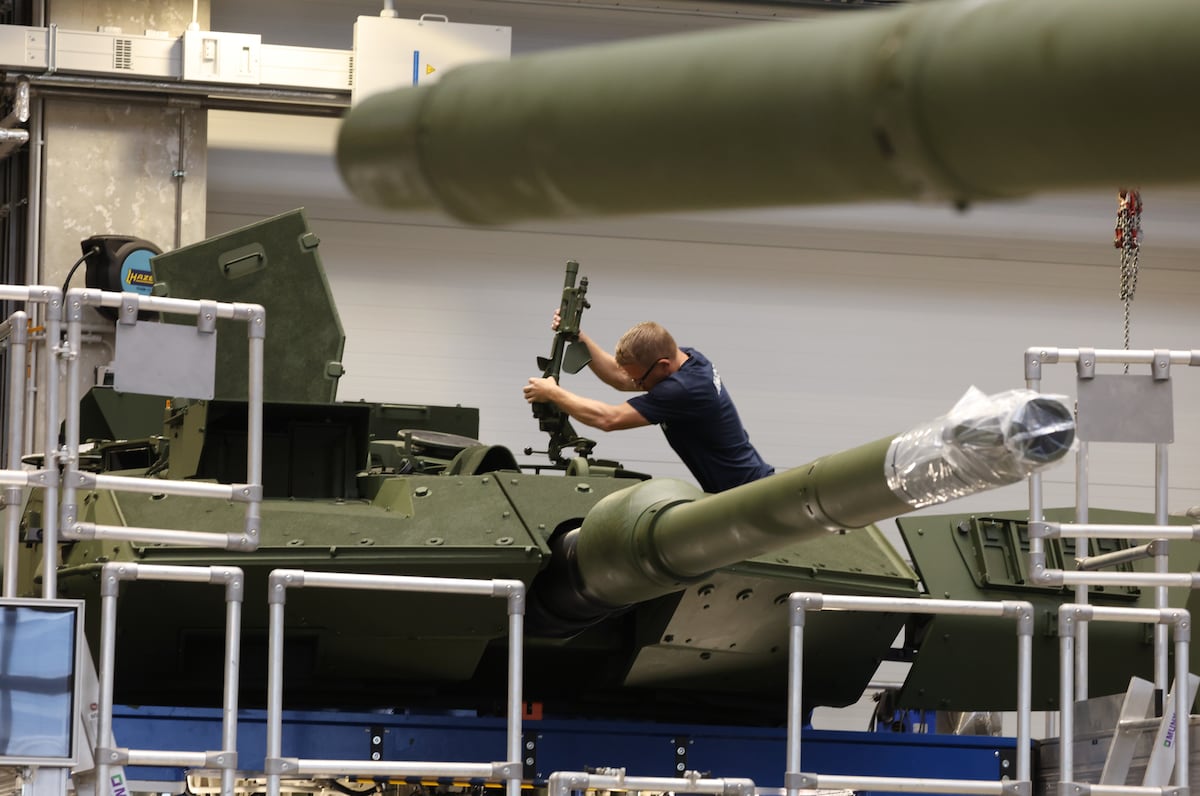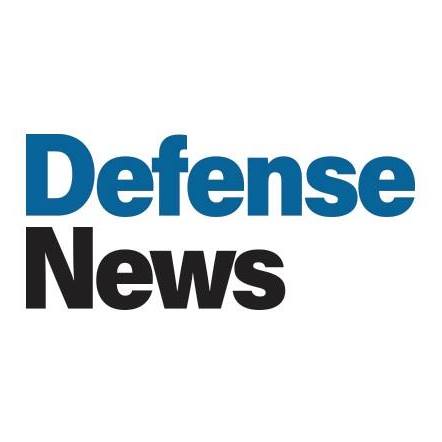


PARIS — European defense companies may grow their revenue from European customers by an average 10.5% to 11.5% a year for the next decade, as most countries commit to NATO’s 2035 spending targets, financial research firm Rothschild & Co. Redburn said.
The fastest growth will continue to be in countries that have underspent historically, such as Germany, or in parts of Europe “uncomfortably close” to the perceived threat from Russia, analysts Olivier Brochet and Joe Orchard wrote in an Oct. 2 report.
Rising military budgets already led to a “material jump” in order backlog that is yet to be fully reflected in financial results and profit outlooks of the continent’s defense industry, the analysts said. European Union countries lifted defense spending by 19% to a record €343 billion ($400 billion) in 2024, with spending set to rise to €381 billion this year, according to the European Defence Agency.
“The European defense industry’s backlog should continue to expand at a faster rate than it is consumed for years,” Brochet and Orchard wrote.
Based on Europe spending 3.5% of GDP on defense in 2035, with 35% to 40% of the budget spent on equipment, European defense equipment spending would be around 1.2% to 1.4% of GDP, more than double today’s levels, the report said.
As it rearms, Europe will “materially outgrow” the United States, which is planning to keep defense procurement steady at about 1% of GDP, according to Brochet and Orchard.
European defense companies on average filled about 34% of their backlog every year between 2013 and 2021, with that number falling to 30% in 2024 due to the acceleration in order intake. The number is expected to return to its historic levels as production capacity increases, the analysts said.
That would then see the industry’s European revenue at least tripling by 2035, Brochet and Orchard wrote, or a compound annual growth rate of 10.5% to 11.5%.
Based on a sample of 11 large Western European defense companies between 2013 and 2024, defense procurement takes about a year to translate into order intake, suggesting the “sharp increase” in defense budgets in 2024 and 2025 could materialize into industry orders in 2025-2026, according to the Redburn analysts.
The backlog for the sample set of companies increased to an average 3.9 years of sales in 2023-24 from three years in the period from 2013 to 2021, they said.
For Europe’s defense industry, the home continent on average accounted for around 65% of 2024 sales, with Naval Group and Rheinmetall getting a larger share from Europe, and BAE Systems on the lower end.
Firms exposed to geographies with the biggest spending increases and those active in air defense and land armament are growing revenue faster than peers, led by the German land-armament defense industry, according to the report.
“Local players disproportionately benefit from the strength in defense spending, as countries aim at reinvesting what is effectively their taxpayer money into their domestic economies,” Brochet and Orchard wrote, adding that has been particularly visible in Germany and Eastern Europe.
Combined sales for six Germany companies – Rheinmetall, KNDS, Hensoldt, TKMS, Diehl and Renk – climbed 16% a year in the 2020-24 period. For six Eastern European companies – PGZ, CSG, Colt CZ, VMZ, Romarm and WB Group – compound average growth rate was 33% over the period, though that included some material mergers and acquisitions activity.
Very active joint venture and M&A strategies will allow “the nimblest of companies in the sector” to capture an even larger share of the growing procurement budget, Brochet and Orchard said.
They said Rheinmetall and Leonardo have been the most visible examples of the joint venture strategy, compared to Thales and BAE Systems that have captured growth through their existing presence in local markets.
The U.S. industry has also used the joint venture strategy in Europe, with Anduril partnering with Rheinmetall and Kratos with Airbus in combat drones, and Lockheed Martin with Rheinmetall and RTX with MBDA in air-defense missiles, according to Brochet and Orchard.
European defense investment will be focused on areas including air defense, the most critically needed capability for Europe, as well as ground defense equipment such as tanks and artillery. Other priority areas will be deep strike, air dominance, aerial drones and counter-drone technology, naval, and space.
Drone innovation is still “very far” from a maturity state, while anti-drone warfare capabilities have become as important as the drones themselves, the analysts said. The countermeasure loop observed in Ukraine is no more than three months, meaning counters are deployed within three months of the appearance of a new system, they said.
“That means that until the Russian threat starts crystallizing, European governments might be reluctant to place large orders for the production of drones that they would then store, with high risk that they could become obsolete in a matter of months.”
Funding of any public good such as defense comes from either borrowing or taxes, and the funding challenge is “particularly acute” for France, the United Kingdom, Italy and Spain due to high levels of public debt, the Redburn analysts said.
Brochet and Orchard noted that public support for rearmament in Europe can’t be taken for granted, especially when it implies trading social security for defense security, when there is no perception of imminent danger.
“It could trigger a massive and potentially radical rejection of the rearmament drive in European countries, especially if they are distant from the European border,” they said. “Future elections in Europe are likely to test the resolve of the voting populations, with a risk of backtracking on the plan should regime change ensue.”
Another risk for European defense companies is pricing pressure should Russia’s war in Ukraine eventually end, the analysts said. At that point, they expect a wave of battle-proven products to enter the international market, with especially drones and ammunition potentially being offered with low prices and short production times.
Western suppliers are deploying defensive strategies such as setting up joint ventures with Ukrainian Defense Industry, according to Brochet and Orchard.
Diversified groups such as Thales and BAE not specialized in ammunition and drones may best resist the post-conflict pressure, the analysts. They also noted Rheinmetall’s diversification efforts outside its core businesses, including deals in missiles, satellites and naval shipbuilding.
Rudy Ruitenberg is a Europe correspondent for Defense News. He started his career at Bloomberg News and has experience reporting on technology, commodity markets and politics.

